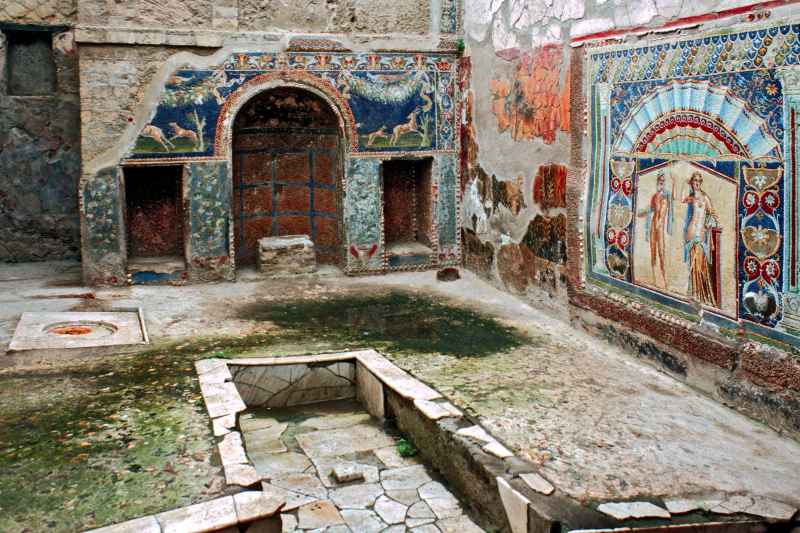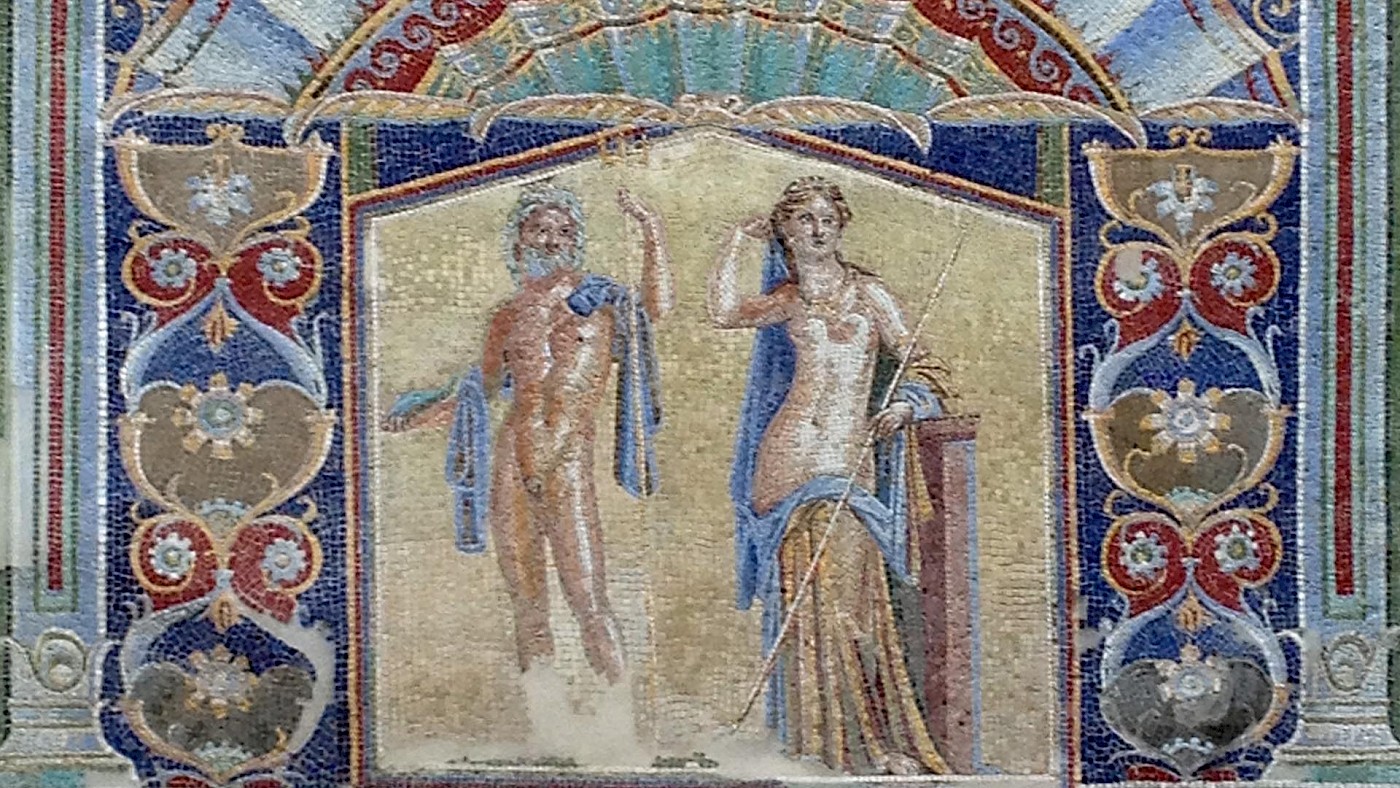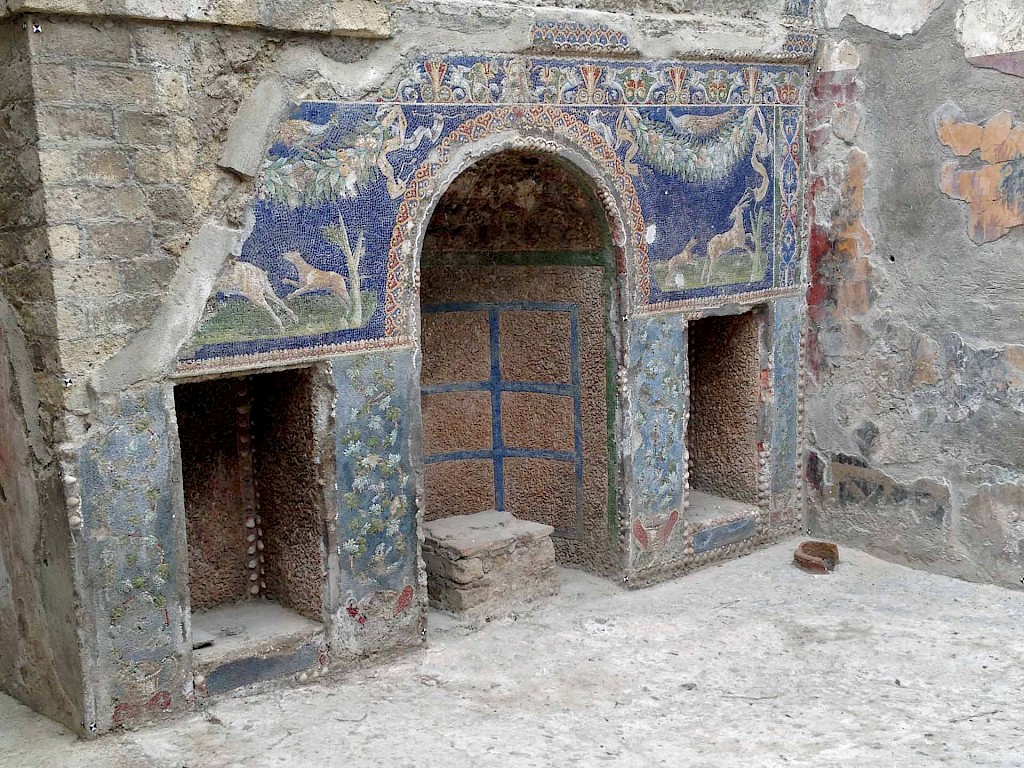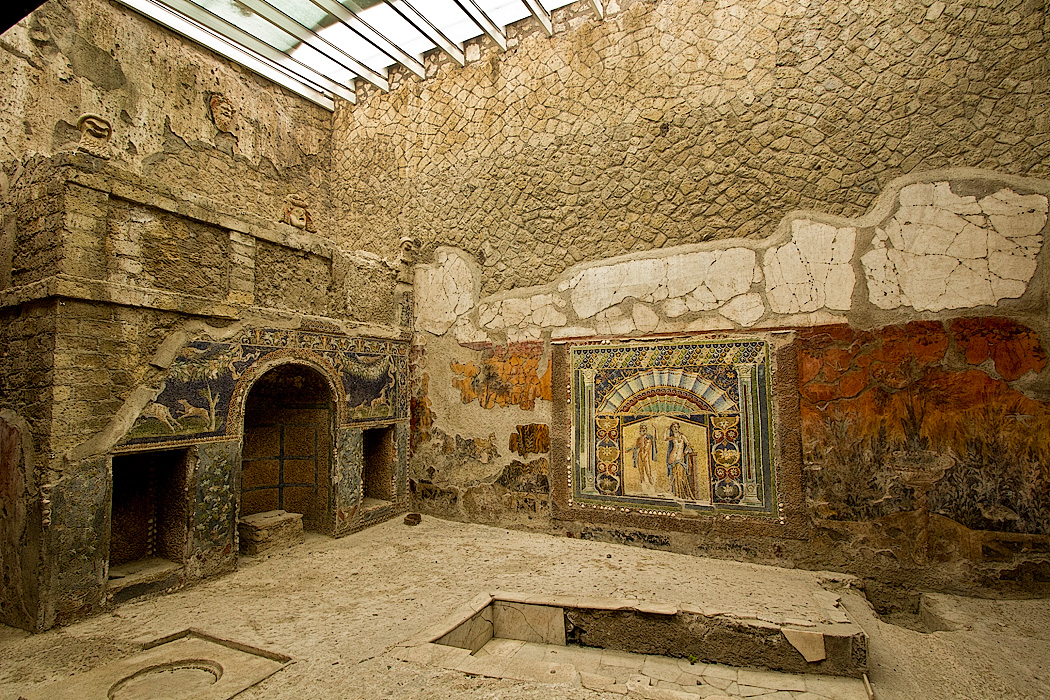House Of Neptune and Amphitrite Herculaneum, Italy.

A small, but richly decorated house in Herculaneum, features a mosaic depicting the sea-god Neptune and his wife.

Josho Brouwers
When Vesuvius erupted in AD 79, it buried not only the city of Pompeii, but a number of other nearby towns as well. One of them was Herculaneum, about which I’ve written before. It’s a beautiful site and well worth your time seeking out.
Among the many houses in Herculaneum is a relatively small, but richly decorated town house, called the House of the Neptune Mosaic, which must have belonged to a wealthy family. It’s located in Insula V, Cardo IV of the city (on the audio tour, it’s number 29).
One of the rooms on the side of the street was a wine shop, one of the best preserved from the Roman world, and fairly large. It’s sometimes suggested that whoever lived here also operated the wine shop, but this needn’t have been the case: it was customary to rent out shops like this, as wealthy Romans preferred to have a bit of a buffer between the noise of the street outside and the quiet of the inner rooms.
At the very back of the house, as far removed from the street as possible, was a courtyard with garden. It features a Nymphaeum, an artificial grotto with a fountain. Against the back wall you’ll find the mosaic after which this house has been named and which serves as this article’s featured image. Like the mosaics decorating the Nymphaeum, it features vivid colours.

Neptune, the god of the sea, is depicted nude next to his scantily-clad wife, Amphitrite. Neptune is easily recognizable by the trident that he’s holding in his left hand. Already in the Theogony, the epic poem about the origins of the world and the gods, attributed to Hesiod (fl. ca. 700 BC), he and Amphitrite are a couple (ll. 930-933).
/680699[1].jpg)
Amphitrite was the daughter of Nereus, a child of the primordial deities Pontus (Sea) and Gaea (Earth). Nereus had many daughters, who are all referred to as Nereids as a result (literally, the offspring of Nereus). In his Bibliotheca, Apollodorus refers to Amphitrite as an Oceanid, i.e. a daughter of the god Oceanus (from whom we derive our word “ocean”).

According to the Astronomica, a book that deals with the myths associated with the constellations and written by the Roman author Gaius Julius Hyginus (ca. 64 BC-AD 17), Neptune had fallen in love with Amphitrite, but she fled from him and sought refuge with Atlas. Among those the god of the sea sent out to look for her was Delphinus (the Dolphin), who managed to find her. In gratitude, Neptune turned Delphinus into the constellation Dolphin.
It’s not the most romantic story, but then again Classical mythology isn’t exactly known for its romanticism. We can hope that the owner’s marriage came about under happier circumstances (even though most marriages in ancient times were arranged). More likely, Neptune refers to the owner’s connections with the sea; he may have been a merchant or otherwise earned his wealth through seaborne trade.
Related Post
A shocking documentary proves that mermaids do exist
SHOCKING Revelation: Thuya, Mother of Queen Tiye, Was the Grandmother of Akhenaten and Tutankhamun—What Ancient Egyptian Secrets Did She Leave Behind?
Breaking News: Astonishing Discoveries at Karahan Tepe Confirm an Extraterrestrial Civilization is Hiding on Earth, and NO ONE Knows!
Breaking News: Researchers FINALLY Discover U.S. Navy Flight 19 After 75 Years Lost in the Bermuda Triangle!
NASA’s Secret Investigation: Uncovering the Astonishing Mystery of the UFO Crash on the Mountain!
Explosive UFO Docs LEAKED: Startling Proof That Aliens Ruled Ancient Egypt!